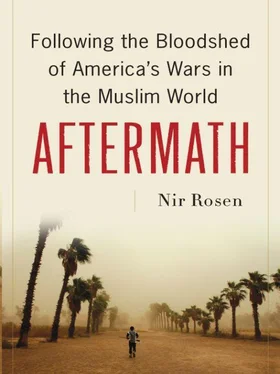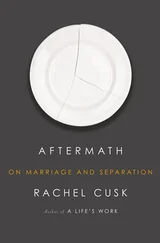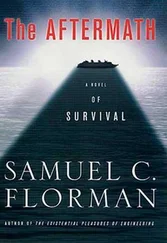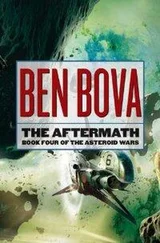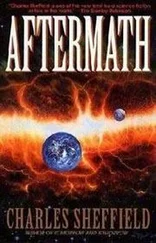According to Miska, the cease-fire was not declared because Muqtada had a change of heart about the United States. “He did it because most of his militia was fragmented and out of control,” he said. “In order to regain control, he issued the cease-fire. Any elements that did not obey the cease-fire would be subject to discipline. Discipline was sometimes doled out by elements we called ‘Golden JAM’ [U.S. military used the acronym JAM—for Jaish al-Mahdi—to describe the Mahdi Army] coming from Najaf to kill rogue leaders and elements. Sometimes the U.S. forces collaborated with the Golden JAM to get the same targets. We also coordinated with moderate members of JAM against more extremist elements. The majority of JAM would never admit this, but it did happen in very subtle and discreet ways. There are many different flavors of the Mahdi Army, its many different members acting for different motives, using the name of the organization.”
Not all factions were so cooperative. Miska described a 2007 battle by the shrine in Kadhimiya in which the American unit called Iraqi Security Forces for help but none of them came. A Sadrist Parliament member, Baha al-Araji, was sitting in the Iraqi brigade commander’s office telling him not to assist the Americans. “The next day Araji introduced a resolution in Parliament to prevent Americans from coming within a certain radius of the shrine to create a sanctuary for JAM to operate,” Miska said. “It didn’t pass, but it set back American relationships.”
Mahdi Army fighters from different areas would come in to place explosively formed penetrators (EFPs)—a more powerful type of IED—targeting the Americans and the Iraqi general in charge. Normally they would warn civilians to leave beforehand. “There was one particular period after a firefight with the Mahdi Army in Kadhimiyah in April 2007,” Miska said. “Prior to the firefight we did not have an IED in six months in the neighborhood. After the firefight we were getting banged with EFPs right outside our gates. We were able to prevent most of the attacks, but some still achieved success. The people were very frustrated about all of the Mahdi Army attacks in Kadhimiyah. But Mahdi elements played on the fears that the infidels were threatening the sanctity of the shrine. Finally in August, my truck got hit with an EFP during a combined patrol. Eleven people hit the ground wounded when the bomb went off. Eight ambulances pulled up to the scene within thirty seconds of the blast. Casualties were quickly hauled away. No U.S. or Iraqi soldiers were wounded. The backlash from the people was quick. A senior leader approached us and asked to broker a deal. If we would agree to bring a former Mahdi Army leader back from hiding in Iran, he would promise to keep the ‘bad’ Mahdi Army out of Kadhimiya. We gave the former leader thirty days to make a difference. He lived up to his end of the deal, since no further Iranian bombs [EFPs] went off in Kadhimiya. We promised not to detain him as long as he did not conduct extremist activities against the Iraqi people or our forces.”
Unlike the Mahdi Army, Al Qaeda took longer to change its calculations. Its ranks were reduced as the Americans targeted them with better intelligence, the Iraqi security forces attacked them, Awakening men turned on them, and they outstayed their welcome in most Sunni areas. American commanders on their third tour of Iraq were beginning to figure out how to do things better; crucially, they demonstrated an improved ability to take advantage of social dynamics in Iraq. The increase in troops also allowed them to take more action without the same limitations. “It’s unclear if the surge would have worked a year earlier,” John Nagl told me. “Sunnis didn’t realize they had lost and the American military wasn’t ready.”
The Americans called these new Sunni militias neighborhood watch groups, concerned local citizens, Iraqi Security Volunteers, or Critical Infrastructure Security guards. These groups were paid by the U.S. military and operated in much of the country, employing former fighters and often empowering them, to the fury of the Shiite-dominated government as well as the Shiite militias, who thought they had defeated the Sunnis, just to see them trying to regain power through the backdoor. The Americans euphemistically called it “Iraqi solutions for Iraqi problems.” General Petraeus paid these former insurgents without first getting approval from Washington. Control over the war had devolved to the field.
Another key dynamic that was fortuitous for the Americans was the success of the sectarian cleansing operations. Militias had consolidated their control; clear front lines were developing. Many Sunni neighborhoods were depopulated. There was nowhere for Sunni militias to hide. The majority of the Iraqi refugees abroad were Sunnis. The Shiites had won the civil war. In 2007 the Bush administration and the U.S. military stopped talking of Iraq as a grand project of nation building, and the American media dutifully obeyed. Any larger narrative was abandoned, and Iraq was presented as a series of small pieces. Just as Iraq was being physically deconstructed, so too was it being intellectually deconstructed, not as a state undergoing transition but as small stories of local heroes and villains, of well-meaning American soldiers, of good news here and progress there. But it was too early to tell if the whole was less or greater than the sum of its parts.
I decided to visit those parts to find out for myself. In December 2007, I took advantage of the lull in Iraq’s civil war to visit areas that had been no-go zones a year earlier. Baghdad’s neighborhoods were walled-off islands, but Iraqis could now visit areas outside their own for the first time in a year or two. The checkpoints manned by the Iraqi Security Forces were no longer as feared, but a foreign journalist was still a tempting commodity. Iraqis knew to make jokes when stopped, to assess if their interlocutor was a Sunni or Shiite, and to use the right kind of slang. For $250 in Baghdad’s Sadr City I purchased two fake Iraqi National Identity cards: one Sunni name and one Shiite name. It was something many Iraqis had done as the “killings over identity” got worse.
I started in Dora, one of Baghdad’s most fearsome neighborhoods. Dora was a formerly mixed area in southern Baghdad with a majority-Sunni population. It was once a good place to live, with many expensive villas; but their prices had fallen dramatically since 2005, when Sunni militias began to expel Shiites and Christians. The Sunni militiamen who cleansed much of Dora lived in the surrounding rural areas, such as Arab Jubur and Hor Rajab. Criminal gangs took advantage of the chaos to target anybody with money for kidnapping and ransom. As the Iraqi Security Forces strengthened and were populated by supporters or members of sectarian Shiite militias, Sunnis from the Shiite areas of southern Baghdad were cleansed. Soon Sunni and Shiite areas exchanged volleys of mortars, and front lines were drawn between neighbors and friends. Shiites moved into empty Sunni homes and Sunnis moved into empty Shiite homes, creating a further incentive for violence that was part criminal and part sectarian. As Sunni militias radicalized and became more anti-Shiite, Sunnis grew to depend on Al Qaeda and the Islamic State of Iraq’s fighters for protection against the Shiite militias. Motivated less by nationalism or any interest in the notion of Iraq, and more by grander Manichaean ambitions to fight the West or establish an Islamic emirate, these radical jihadist groups became a golem, terrorizing the very Sunnis looking to them for protection and often acting like criminal gangs. Dora was easily accessible from the southern belts of Baghdad, allowing Al Qaeda to cross the Tigris and enter Karada and other Shiite areas. Dora was also on the highway to Baghdad from the south and adjacent to the still-contested Seidiya neighborhood.
Читать дальше
